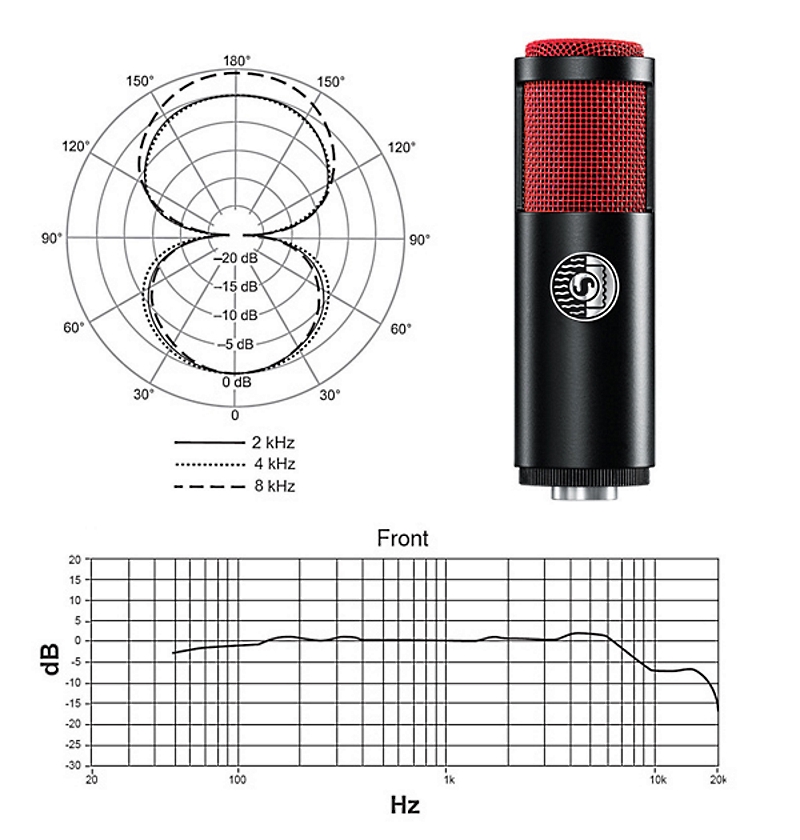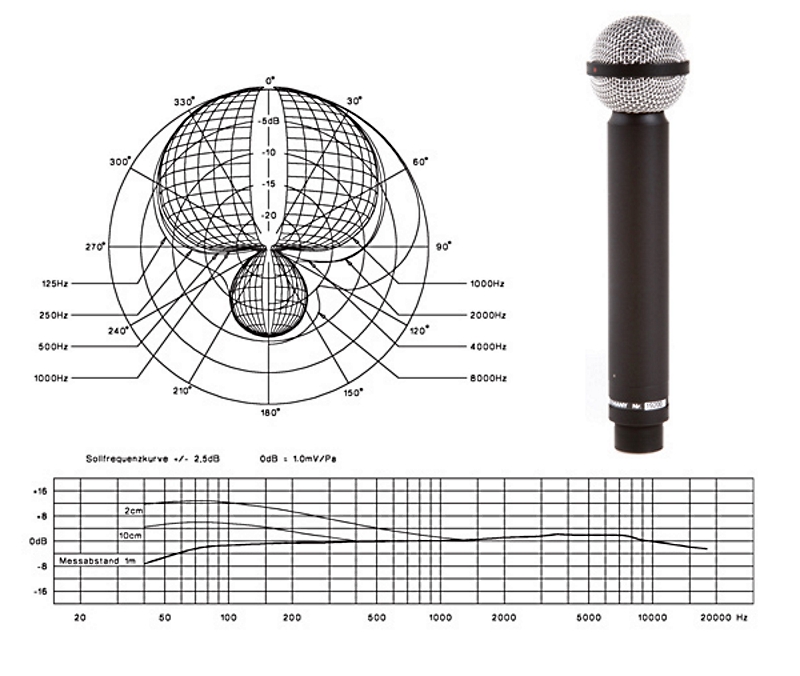
Polar Pattern
Because the ribbon is open to sound on both sides, it has a bi-directional or figure-8 polar pattern. As a result, it’s most sensitive to sound in the front and rear of the mic, and is almost “dead” on the sides (90 degrees off axis to the left, right, top and bottom).
That’s because side-arriving sound waves strike the front and rear of the ribbon equally and push it in opposite directions, so the ribbon doesn’t move. As a result, ribbon mics offer excellent isolation if their sides are aimed at unwanted sound sources. Some manufacturers also partially close the back area to create a hypercardioid pattern.
In addition, because the ribbon is very narrow, the polar pattern in the horizontal plane tends to stay constant with frequency – unlike with moving coil and condenser mics. So ribbon designs have very little off-axis coloration, and any leakage that does get in typically will tend to sound natural as opposed to colored.
What’s more, a figure-8 pattern has more proximity effect (up-close bass boost) than cardioid or supercardioid patterns. That huge proximity effect can be used to advantage. Place a ribbon mic close to the source to boost the lows, then roll them off with EQ – you’ve just created a noise-cancelling microphone!

Getting Tougher
In addition, because the ribbon is very narrow, the polar pattern in the horizontal plane tends to stay constant with frequency – unlike with moving coil and condenser mics. So ribbon designs have very little off-axis coloration, and any leakage that does get in typically will tend to sound natural as opposed to colored.
What’s more, a figure-8 pattern has more proximity effect (up-close bass boost) than cardioid or supercardioid patterns. That huge proximity effect can be used to advantage. Place a ribbon mic close to the source to boost the lows, then roll them off with EQ – you’ve just created a noise-cancelling microphone!
Getting Tougher
Figure 3 shows a typical polar pattern and frequency response of a ribbon mic, while Figure 4 offers another polar pattern, frequency response and proximity effect measurement. Note that most ribbons are side-addressed, but models by beyerdynamic are end-addressed.
A ribbon is extremely thin and loosely stretched, so it can be deformed easily – even if corrugated. A sharp blow or air puff can damage the ribbon element.
However, new roadworthy designs use thicker material. For example, Royer developed a new ribbon thickness for the R-121 Live microphone that increases durability with little effect on gain and transient response. According to Royer, the sonic difference is negligible.

The benefits are additional resilience at extreme SPL, high tensile strength, toughness, and shape memory.Further, Audio-Technica’s proprietary MicroLinear ribbon imprint protects ribbon elements from lateral flexing and distortion, while the Shure KSM313 uses a “Roswellite” ribbon material that replaces the traditional foil ribbon.
Some new models also have thicker grille wires, stronger housings, and heavy-duty shock mounts for added protection.
Ribbon mics, in general, are not affected by heat or humidity, and current models can withstand very high sound levels, typically 146 dB SPL.
